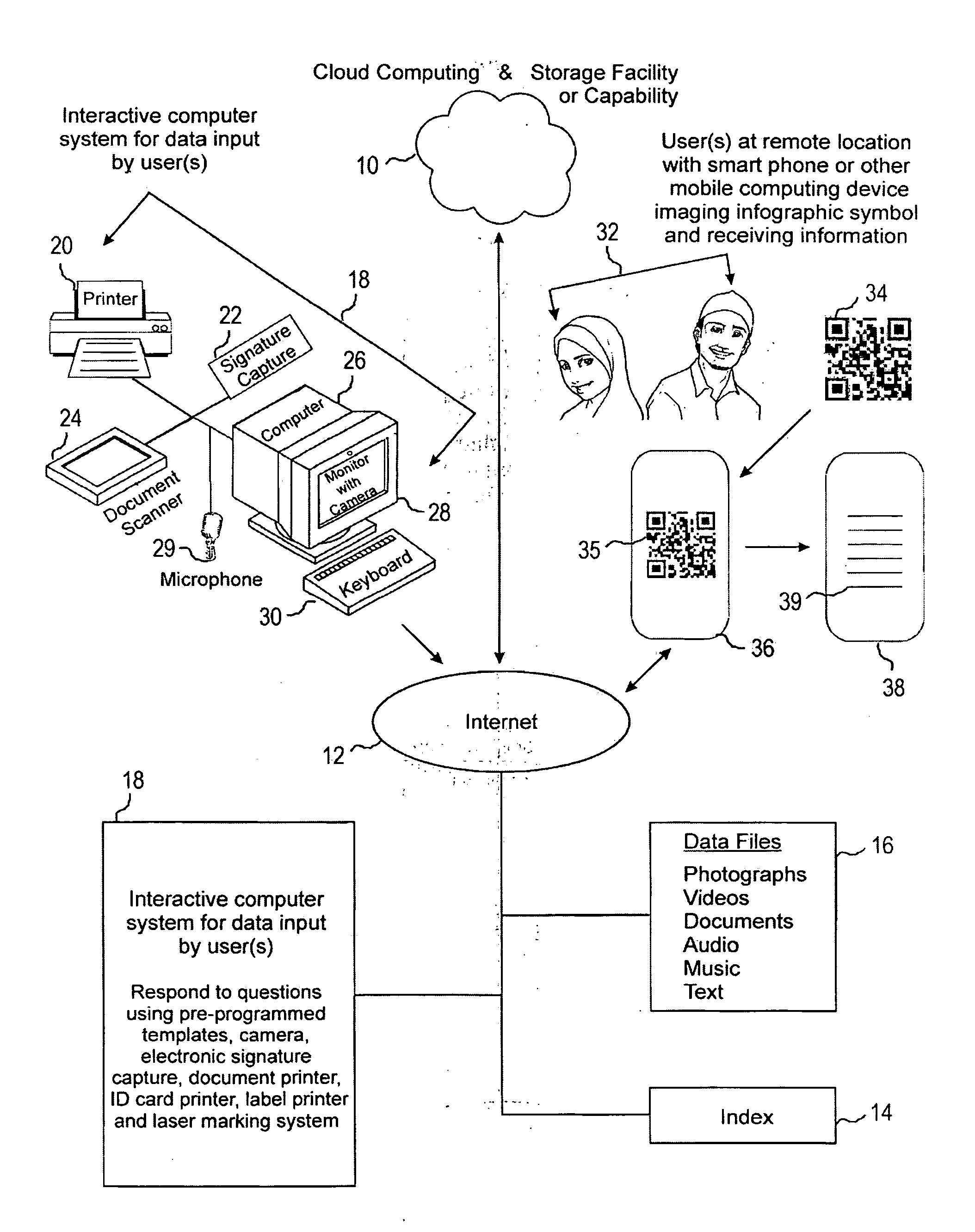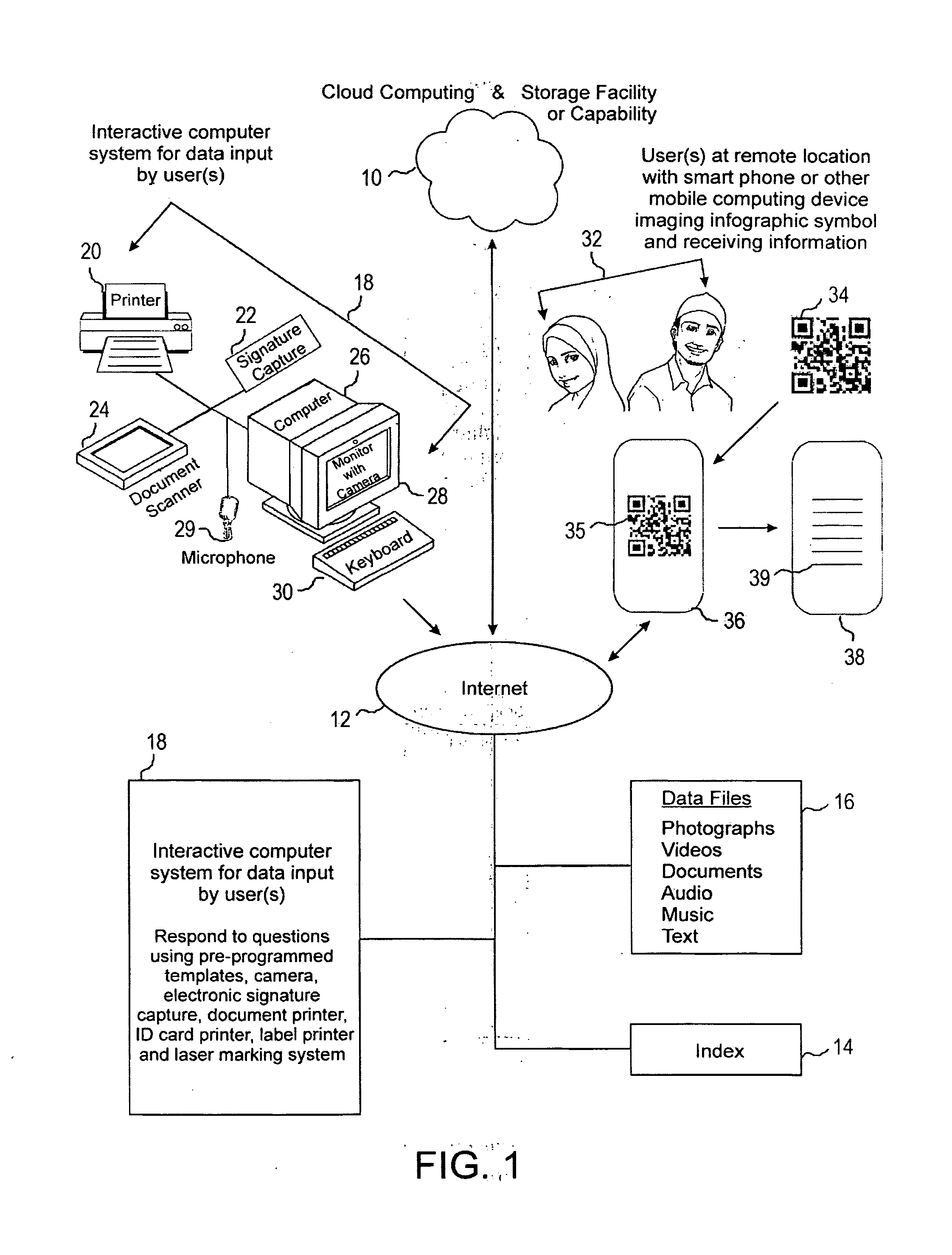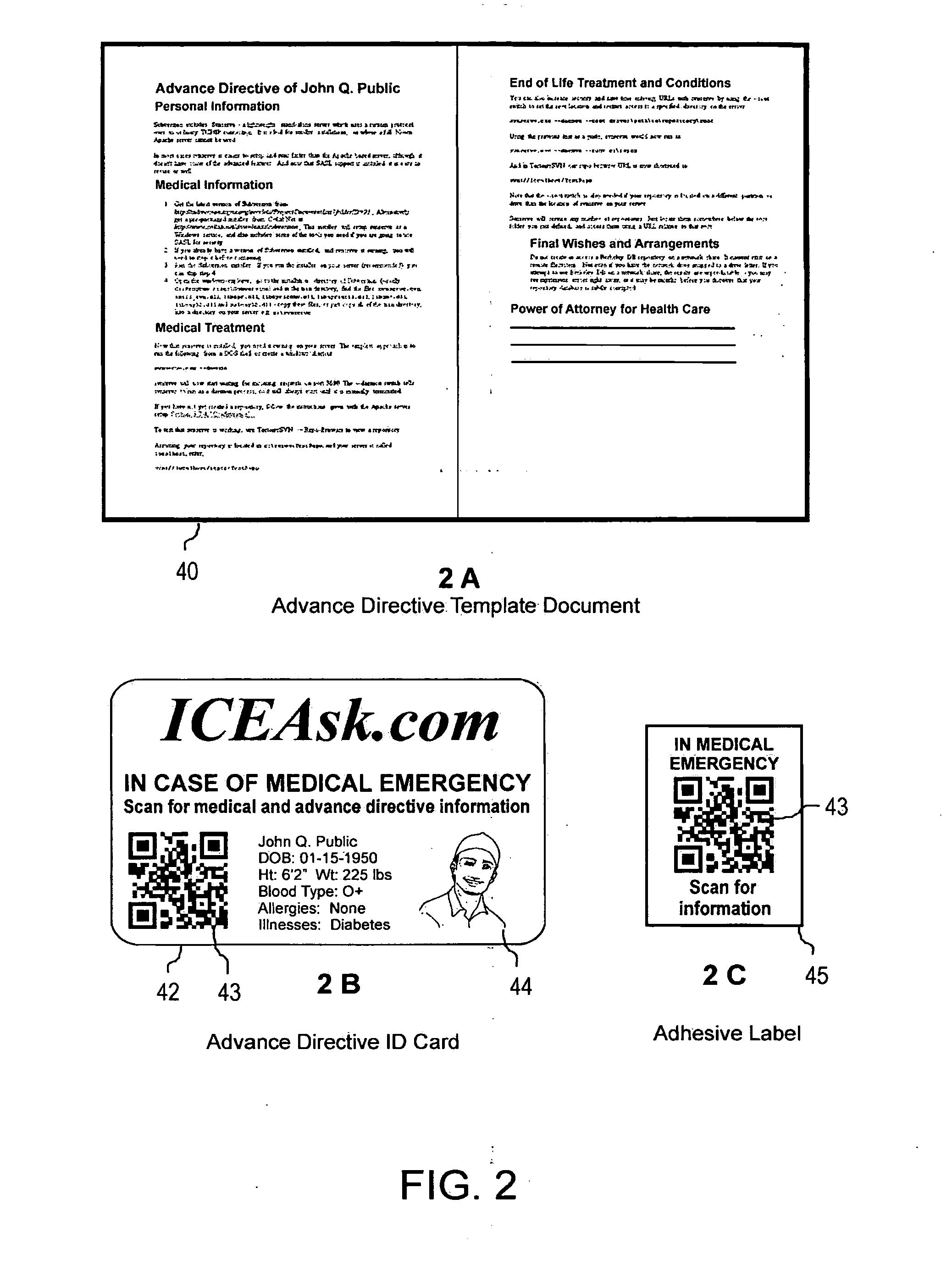Systems and methods for the creation, transmission and storage of information and subsequent retrieval by a user
a technology of information creation and transmission, applied in the field of systems and methods for the creation, transmission and storage of information and subsequent retrieval by a user, can solve the problems of social network sites that are not suited for the secure creation, storage, retrieval, transmission and display of private, copyrighted and/or confidential information, and people suffer injury or death from mostly preventable prescription errors
- Summary
- Abstract
- Description
- Claims
- Application Information
AI Technical Summary
Benefits of technology
Problems solved by technology
Method used
Image
Examples
Embodiment Construction
[0077]In the following description, contemporary terms are used for devices which represent apparatus having certain capabilities which may be duplicated or presented in improved and / or updated form in subsequent versions of such devices or different devices which provide the same capabilities. For example, the functions of a “smart phone” such as the iPhone produced by Apple. Computer company can be provided (along with other functions) by a small portable computer such as an iPad®, also produced by Apple. Similarly, electronic devices comprising microprocessors and other computer components can be provided with executable programs, commonly referred to as software (or in the case of smart phones, computer applications or “apps”) to enable them to perform certain functions when actuated by an operator / user or by signals containing commands, queries or the like from another device. In this description, the condensed expression “and / or” is used in the conventional sense, in which “A ...
PUM
| Property | Measurement | Unit |
|---|---|---|
| transmission | aaaaa | aaaaa |
| durable | aaaaa | aaaaa |
| adhesive | aaaaa | aaaaa |
Abstract
Description
Claims
Application Information
 Login to View More
Login to View More - R&D
- Intellectual Property
- Life Sciences
- Materials
- Tech Scout
- Unparalleled Data Quality
- Higher Quality Content
- 60% Fewer Hallucinations
Browse by: Latest US Patents, China's latest patents, Technical Efficacy Thesaurus, Application Domain, Technology Topic, Popular Technical Reports.
© 2025 PatSnap. All rights reserved.Legal|Privacy policy|Modern Slavery Act Transparency Statement|Sitemap|About US| Contact US: help@patsnap.com



